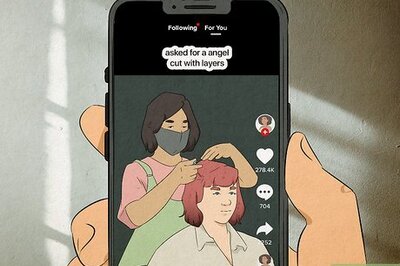
views
The presence of St. Louis Encephalitis (SLE) virus has been detected in mosquitoes collected in Comet Avenue and Chino-Corona Road in Chino, as reported by local news agency Champion News. The detection has been made by The West Valley Mosquito and Vector Control District. “This is the first time since the formation of the district (in 1983) that SLE has been detected in our area,” said district manager Michelle Brown.
St. Louis Encephalitis is a mosquito-borne disease much like malaria, dengue or chikungunya. However, people infected with SLE virus have no apparent illness. Initial symptoms of those who become ill include fever, headache, nausea, vomiting, and tiredness. Severe neuroinvasive disease occurs more commonly in older adults. In rare cases, long-term disability or death can result, according to the Centers for Disease Control and Prevention (CDC).
SLE has also been detected in the Central Valley, as well as Riverside and Orange counties, she said.
SLE is a viral disease spread to people by the bite of an infected mosquito. Most people infected with SLE virus have no apparent illness. Initial symptoms of those who become ill include fever, headache, nausea, vomiting, and tiredness. Severe neuroinvasive disease (often involving encephalitis, an inflammation of the brain) occurs more commonly in older adults. In rare cases, long-term disability or death can result. There are neither vaccines to prevent nor medications to treat SLE.
Dr. Brown further added that the mosquitoes carrying SLE are not the black and white “Aedes” mosquitoes that have been aggressively biting residents day and night, but the native “Culex” mosquitoes. SLE is a mosquito-transmitted virus in the “flavivirus family,” which is the same as the West Nile Virus.
She also said the preventing mosquito bites and reducing breeding sites are the most effective methods residents can take to reduce their risks of mosquito-transmitted diseases. She recommended wearing repellant containing DEET, Picaridin, Oil of Lemon Eucalyptus, or IR3535. Dumping standing water around the home and making sure door and window screens have no holes or tears are also recommended.
Dr. Brown also confirmed that four West Nile virus positive mosquito samples were collected the week of Sept. 2 to 6, including Butterfield Ranch Road and Park Crest Drive in Chino Hills and Cucamonga Avenue and Chino-Corona Road in Chino.
West Nile virus is another leading cause of mosquito-borne disease in the continental United States. It is most commonly spread to people by the bite of an infected mosquito. Cases of WNV occur during mosquito season, which starts in the summer and continues through fall. There are no vaccines to prevent or medications to treat WNV in people.




















Comments
0 comment